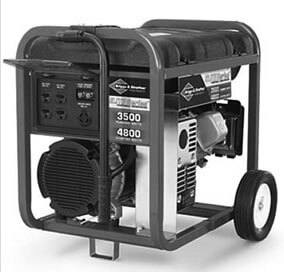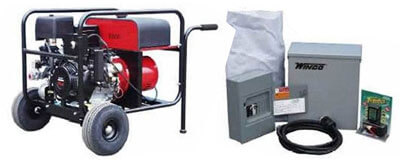Generator Safety
Practical Electrical Safety Considerations

During hurricane season, many people prepare for the possibility of extended power outages by purchasing and installing small, gasoline-powered portable electric generators. While this seems like a perfect solution, trying to supply power to your entire house with a portable generator is potentially dangerous to you and to utility company linemen. So follow these safety guidelines when using portable generators in emergencies. Generators can also cause personal injury. For example, if a power company employee is working on an electrical line thinking it is not energized and electrical current created by the generator is in the line, shock or electrocution may occur.
The best way to use these generators is to install them safely and to use only as much power as is absolutely necessary. For example, if you only need to provide electricity to your refrigerator and a few lights during an outage, the simplest and safest way is to run an extension cord of the correct gauge directly from the generator to the appliance.
It is impractical, and potentially dangerous, to try to supply power to the entire house with a portable generator. Unless certain switches have been installed or a certified electrician has installed the generator, the hookup could be dangerous to both you and the utility company employees trying to restore power. The generator itself may even be damaged when power is restored if it has been improperly installed.
Any installation that requires a direct connection to electrical equipment requires a certified electrician. The safety benefits and peace of mind for your family will be well worth the cost.
Transfer Switch Safety Issues

Electrical current from the generator may "backfeed" into the home's electrical system and cause damage or fire and ruin equipment if it is not properly installed. It is recommended a qualified electrician install a generator to a home electrical system.
Some transfer switches automatically trip to generator power if there is a power failure while others must be switched manually. A transfer switch works by isolating a few of the electrical circuits in the home from the incoming electrical service. If the generator is running and power is restored, the power company's electricity cannot get to those isolated circuits until the generator is turned off and the transfer switch is reset to the non-backup position.